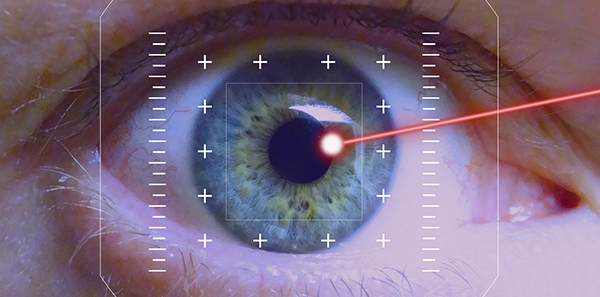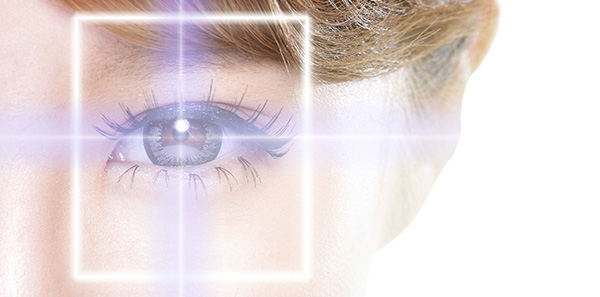
Refractive corneal surgery involves reshaping the cornea according to the sight defect suffered by the patient (nearsightedness, farsightedness and/or astigmatism) using the excimer laser.The patient’s eyesight improves because the laser alters the curvature of the cornea, thus reducing diopters.
Treatment applied to the Surface of the cornea is called PRK or superficial treatment, while treatment applied to a deeper level is called LASIK. In the case of LASIK, the outermost corneal level, called the flap, is dissected aside. The excimer laser is then to be used to reshape the cornea, and the flap is then replaced. There is less discomfort with this technique, from which patients recover more quickly, allowing them to return to work within three to four days.
There are two ways of creating the flap: keratomileusis or femtosecond (Intralase).The microkeratome is a surgical instrument in the tip of a scalpel that is used to make the incision. The femtosecond laser creates the flap more accurately for a cleaner cut, giving the surgeon greater control over its thickness throughout.
At the Institute de Oftalmología Avanzada the flap is made using the Intralase system because it is extremely safe and because of its advantages over the microkeratome. The laser allows us to create a flap of the exact size and in the position required, with a specific thickness. This is essential because it is related to the thickness of the cornea in each individual patient.
What’s more, because the laser is more accurate than the scalpel and the flap it creates is more even, patients recover better, which has a direct effect on final vision quality. It also causes less discomfort.
With regard to PRK Surface treatment, this is chosen primarily for safety reasons and is suitable for patients who have a habit of rubbing their eyes or who have dangerous hobbies or Jobs such as policemen, firemen or boxers. In such cases, no flap is created and the excimer laser is applied to the Surface. The drawback is that for the first few days there is more discomfort than with LASIK and therefore recovery takes longer.
At the Instituto de Oftalmología Avanzada we work with the Zeiss Mel 80 excimer laser, a state-of-the-art instrument which uses a mere 0.66 mm laser beam and which considerably reduces ablation time, thus contributing to the patient comfort and more efficient planning or work schedules.
The Mel 80 system also includes the WASCA Analyser (aberrometer), which determines the optical characteristics of the entire eye from cornea to retina, and the CRS-Master system, which allows PERSONALISED reshaping and ablation according to each patient’s individual characteristics and is the most modern, up-to-date system. Moreover, the Eye-tracker system and IRIS recognition give surgeons total control over ablation, including any small movements the patient may make during the process.
Dr. Francisco Poyales Galán-Specialist in Ophthalmology
The information published in this media neither substitutes nor complements in any way the direct supervision of a doctor, his diagnosis or the treatment that he may prescribe. It should also not be used for self-diagnosis.
The exclusive responsibility for the use of this service lies with the reader.
ASSSA advises you to always consult your doctor about any issue concerning your health.












